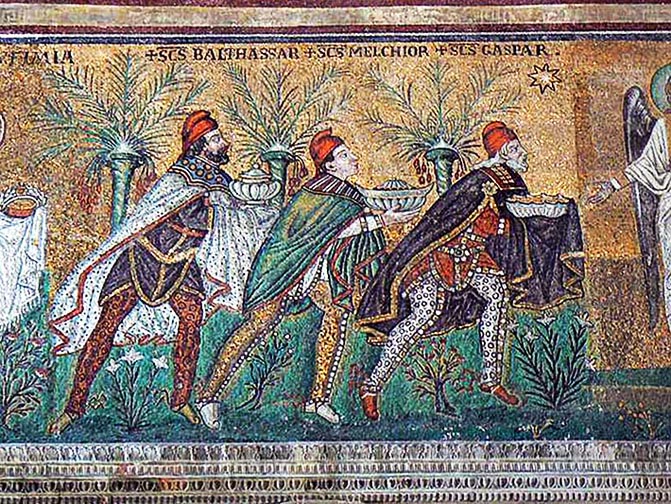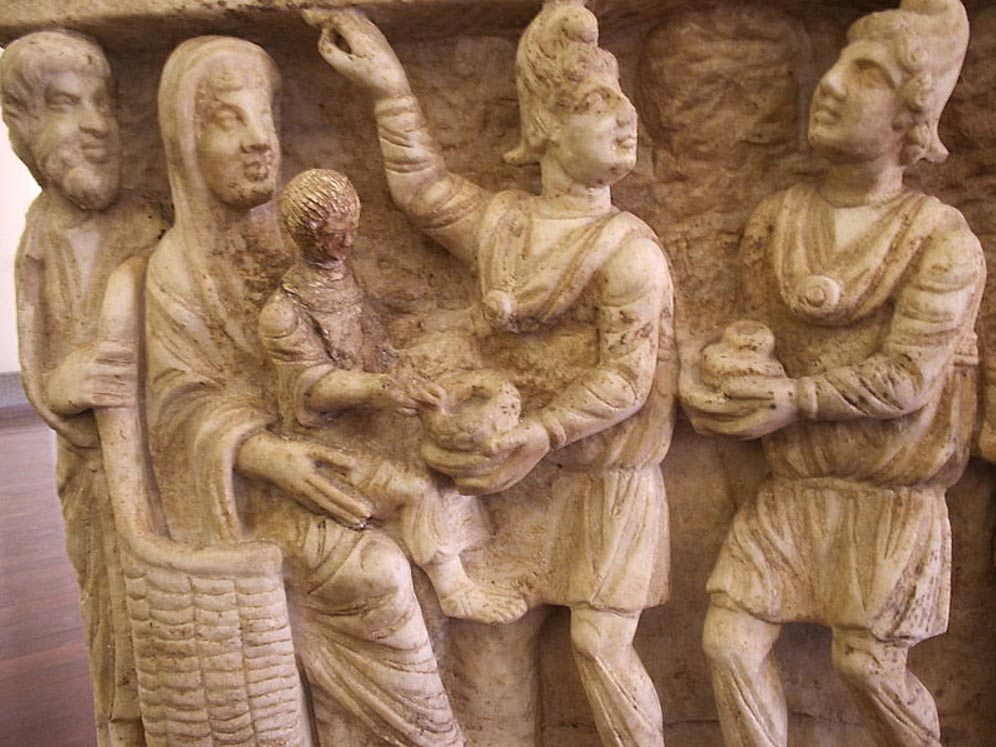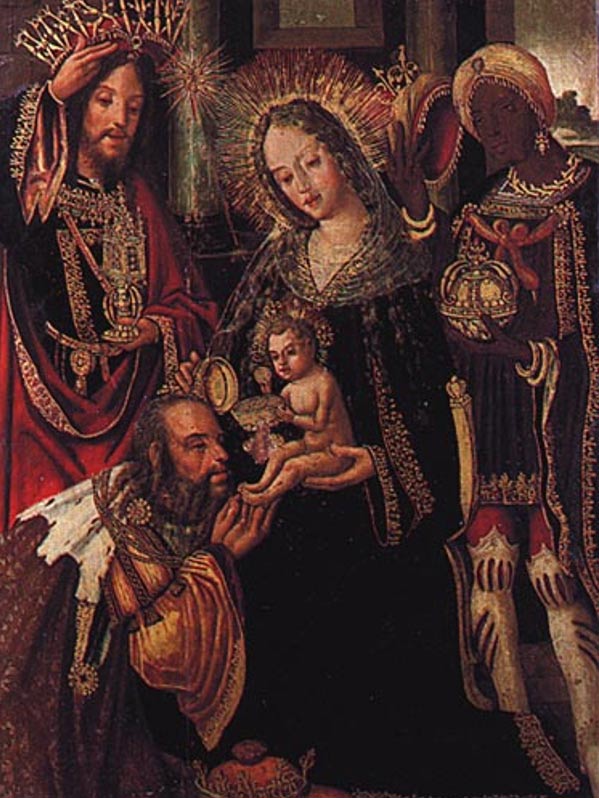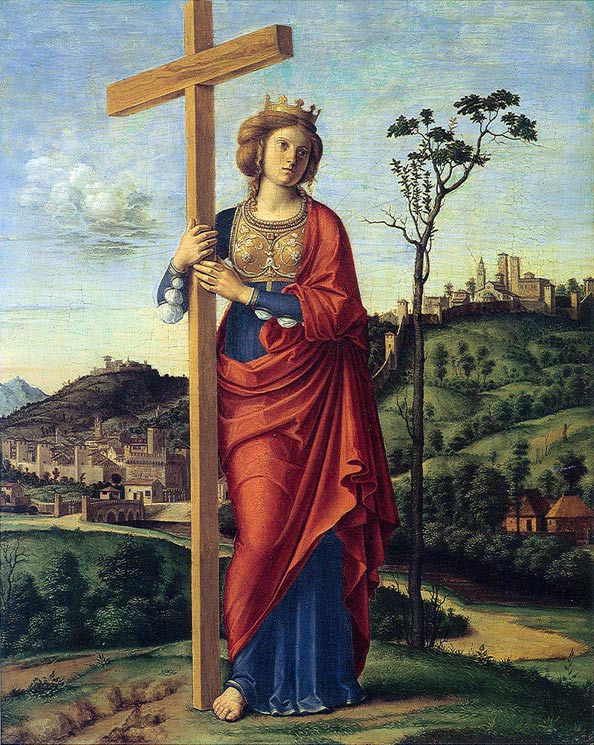The article below “The Mysteries of the Three Kings: Who Were They and Where Did They Come From?” was originally posted on the Ancient Origins website on September 24, 2015 by DHWTY.
====================================
In Western Christianity, the feast of Epiphany, also known as Three Kings’ Day, is celebrated annually to commemorate the visit of the Magi from the East to the baby Jesus. The image of three wise men from the East bringing precious gifts and paying homage to the child Jesus is linked inextricably with today’s Nativity scenes. Nevertheless, the story of the Magi’s visit is not found in all four of the canonical Gospels. Apart from the Gospel according to Matthew, the other three Gospels say nothing about these magi. So, who are the Magi, or Three Kings, who visited the infant Jesus?

A Byzantine depiction of the Three Wise Men (526 CE), Basilica of Sant’ Apollinare Nuovo, Ravenna, Italy. (Source: Public Domain).
The Magi in Matthew’s Gospel – How Many Magi Were There?
The account in Matthew’s Gospel regarding the visitation of the Magi is as follows:
“Now when Jesus was born in Bethlehem of Judaea in the days of Herod the king, behold, there came wise men from the east to Jerusalem… When they saw the star, they rejoiced with exceeding great joy. And when they were come into the house, they saw the young child with Mary his mother, and fell down, and worshipped him: and when they had opened their treasures, they presented unto him gifts; gold, and frankincense, and myrrh.”
Note that Matthew does not mention the exact number of these wise men from the East. According to tradition, however, there were three wise men. It is likely that this number was chosen to correspond with the number of gifts presented to the baby Jesus – gold, frankincense, and myrrh.
Nevertheless, other numbers are provided by other traditions. In the Orient, for instance, tradition dictates that there were 12 Magi. Additionally, early Christian art provides different numbers of Magi. In a painting from the cemetery of Sts. Peter and Marcellinus, two Magi are shown. A painting in the Lateran Museum, however, shows three, whilst another in the cemetery of Domitilla shows four. On a vase in the Kircher Museum, eight Magi are shown.

3rd Century Sarcophagus depicting two magi bearing gifts. Vatican Museums, Rome, Italy (Source: Public Domain).
What Were the Wise Men’s Names?
Like the number of Magi, the names of these wise men are also unknown. Once again, it is due to tradition that we have their names. Additionally, the names given to these Biblical figures differ based on tradition. In Western tradition, for instance, the three Magi were Melchior, Caspar and Balthazar. These men were said to have come from Persia, India and Babylonia respectively.
According to the Syrian tradition however, the names of the Magi are Larvandad, Hormisdas, and Gushnasaph. In the Armenian tradition, on the other hand, Kagba, Badadakharida, and Badadilma are the names of the Magi.
After the Magi had paid homage to the infant Jesus, they were prepared to return to Jerusalem, as they were requested by King Herod to bring news of the child’s whereabouts. The wise men believed Herod when he claimed that he desired to go and worship the new-born king as well. In a dream, however, the wise men were warned by God not to return to Herod, and the Magi “departed into their own country another way.”

Adoração dos Magos (1518) by Vicente Gil. Museu Nacional de Machado de Castro Coimbra, Portugal (Source: Public Domain)
The Magi and St. Helena
Thus the story of the Magi comes to an end, or so it seems. During the 4th century AD, St. Helena, the mother of the Roman emperor Constantine, embarked on a quest to locate the sacred relics of the Christian faith.
It is said that St. Helena succeeded in finding the remains of the Magi, reportedly discovered in Persia, and then brought them back to Constantinople. During the 5th century AD, the relics of the Magi were brought to Milan.
When the city was conquered by Frederick Barbarossa, the Holy Roman Emperor in 1164, the relics were given to Rainald von Dassel, the Archbishop of Cologne. The remains of the Magi were then transferred to Cologne Cathedral, where they have remained, behind the high altar, ever since.

Helena of Constantinople (1495) by Cima da Conegliano (Source: Public Domain).
A large gilded sarcophagus was built to house these remains. This reliquary, known as the Shrine of the Three Kings, is the largest reliquary in the Western world, and has drawn pilgrims to Cologne Cathedral since the supposed remains of the Magi arrived in the city during the 12th century.
References
The Bible: Standard King James Version, 2014.
christianity.about.com, 2015. Three Kings – Wise Men from the East. [Online] Available at: http://christianity.about.com/od/newtestamentpeople/a/Three-Kings.htm
Drum, W., 1910. Magi. [Online] Available at: http://www.newadvent.org/cathen/09527a.htm
Sacred Destinations, 2015. Cologne Cathedral. [Online] Available at: http://www.sacred-destinations.com/germany/cologne-cathedral
www.cologne.de, 2015. The Cologne Cathedral. [Online] Available at: http://www.cologne.de/what-to-do/the-cologne-cathedral.html



